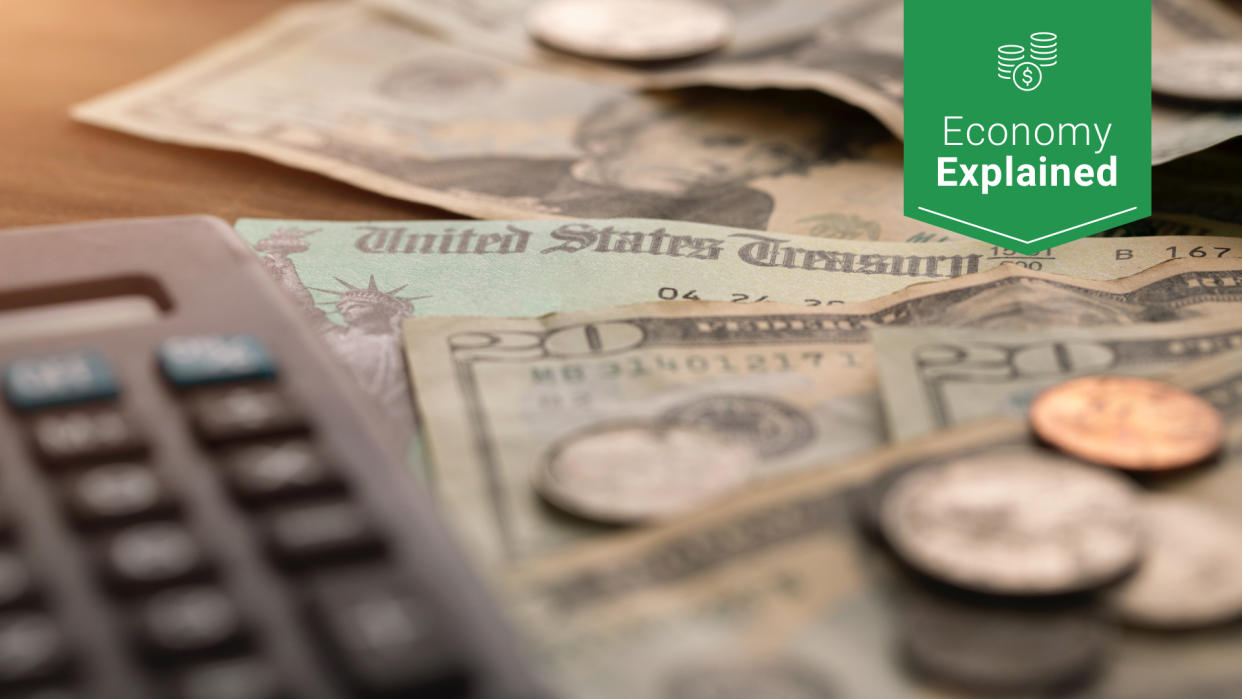The Exchange Rate Impacts Your Money in Many Ways: Here’s What You Need To Know

When COVID-19 and its travel bans are finally in the history books, millions of Americans will dust off their suitcases, dig out their passports and book a flight to anywhere. When they get there, they’ll trade in some of their green American cash — say, $100 — for 7,270 Indian rupees. Or 84 euros or 622 Danish kroner or 357,800 Colombian pesos. In other words, they’ll convert their currency so they can spend like the locals. The exchange rates that determine how much local money they’ll get for their George Washingtons will impact their lives long after their vacations come to an end.
The Economy and Your Money: All You Need To Know
Find Out: What Is the Consumer Confidence Index and How Does It Affect Me?
Exchange Rates Matter If You Travel — and If You Don’t
Exchange rates measure the value of one country’s currency against that of another. Based on March 12, 2021, exchange rates, you’d need 72.689114 Indian rupees, 6.221649 Danish kroner or 3,578.020623 Colombian pesos to buy one U.S. dollar — but just 0.836594 euros.
Economy Explained: What’s the Difference Between Effective Tax Rate and Marginal Tax Bracket?
When a dollar can buy more in a foreign country, the dollar is strengthening. When it can buy less, it’s weakening. Therefore, a strong dollar is good for Americans on overseas vacations who can buy and do more with the same amount of cash. But exchange rates affect you whether you travel or not, and it can be good, bad or both at the same time.
Find Out More: What Is Inflation and What Does It Mean When It Goes Up or Down?
A Strong Dollar Improves Your Standard of Living
When the dollar is strong, imported goods are cheaper, inflation is lower and Americans can buy more with less. When the dollar is weak — when it can buy less foreign currency — imports cost more. That means everyday purchases like groceries are more expensive, inflation rises and your standard of living decreases along with the dollar’s purchasing power.
It’s Good for Consumers but Bad for Business
A strong dollar makes American exports more expensive overseas and therefore less attractive to foreign buyers. Even American businesses that don’t export things suffer when the dollar is strong because they have to compete with cheap imports. In both cases, the eventual results are economic constriction and stunted job growth.
More Economy Explained: Understanding US Productivity and All the Ways It Affects You
Exchange Rates Influence the Cost of Borrowing
Currency exchange rates are tied to U.S. Treasury bills, notes and bonds, which are tied to interest rates. When the dollar is strong, demand for Treasurys rises and interest rates drop. When interest rates drop, consumers pay less to borrow money for things like auto loans and mortgages. When the dollar loses value, on the other hand, interest rates rise and it costs more to borrow money.
Gas Is Cheap When Exchange Rates Favor the Dollar
Gas prices are tied to oil prices and oil contracts are executed in U.S. dollars. The U.S. and Saudi Arabia are the world’s biggest oil producers. Saudi Arabia’s currency has been pegged to the U.S. dollar since 1986, so when the dollar strengthens, so does the Saudi riyal. When the value of the dollar falls, imports become more expensive in both the U.S. and Saudi Arabia. They then compensate by charging more for the oil they export, which makes the price of gas go up.
Read: How To Calculate Your Debt-to-Income Ratio
It’s Not Just Oil — Exchange Rates Steer All Commodity Prices
Commodities are raw materials that are the same no matter the source, like oil, gold, cotton, soybeans and copper. Because of its stability and international ubiquity, the U.S. dollar is the reserve currency of the world. Since the commodity trade is global, the dollar is the benchmark currency for the trade of most commodities.
Because of this dynamic, commodities and the dollar have an inverse relationship. When the dollar is strong, the price of gold, coffee, wheat and other commodities drops. When the exchange rate changes and the dollar weakens, commodities become more expensive and that gold ETF in your portfolio goes up, but so does the price of orange juice.
Economy Explained: What’s the Difference Between Fiscal vs. Monetary Policy?
You Can Bet On It
The foreign exchange — called forex or FX — is a global marketplace that lets investors buy and sell currency in the hopes of making a profit when exchange rates change, which they constantly do. Forex is complex and risky, so make sure you understand what you’re getting into before you put real money down. Whether you delve into forex trading or not, the things you buy, the things you do, the places you go and even whether or not you have a job will depend a lot on the exchange rate assigned to the money in your pocket.
This article is part of GOBankingRates’ ‘Economy Explained’ series to help readers navigate the complexities of our financial system.
More From GOBankingRates
Last updated: March 16, 2021
This article originally appeared on GOBankingRates.com: The Exchange Rate Impacts Your Money in Many Ways: Here’s What You Need To Know
